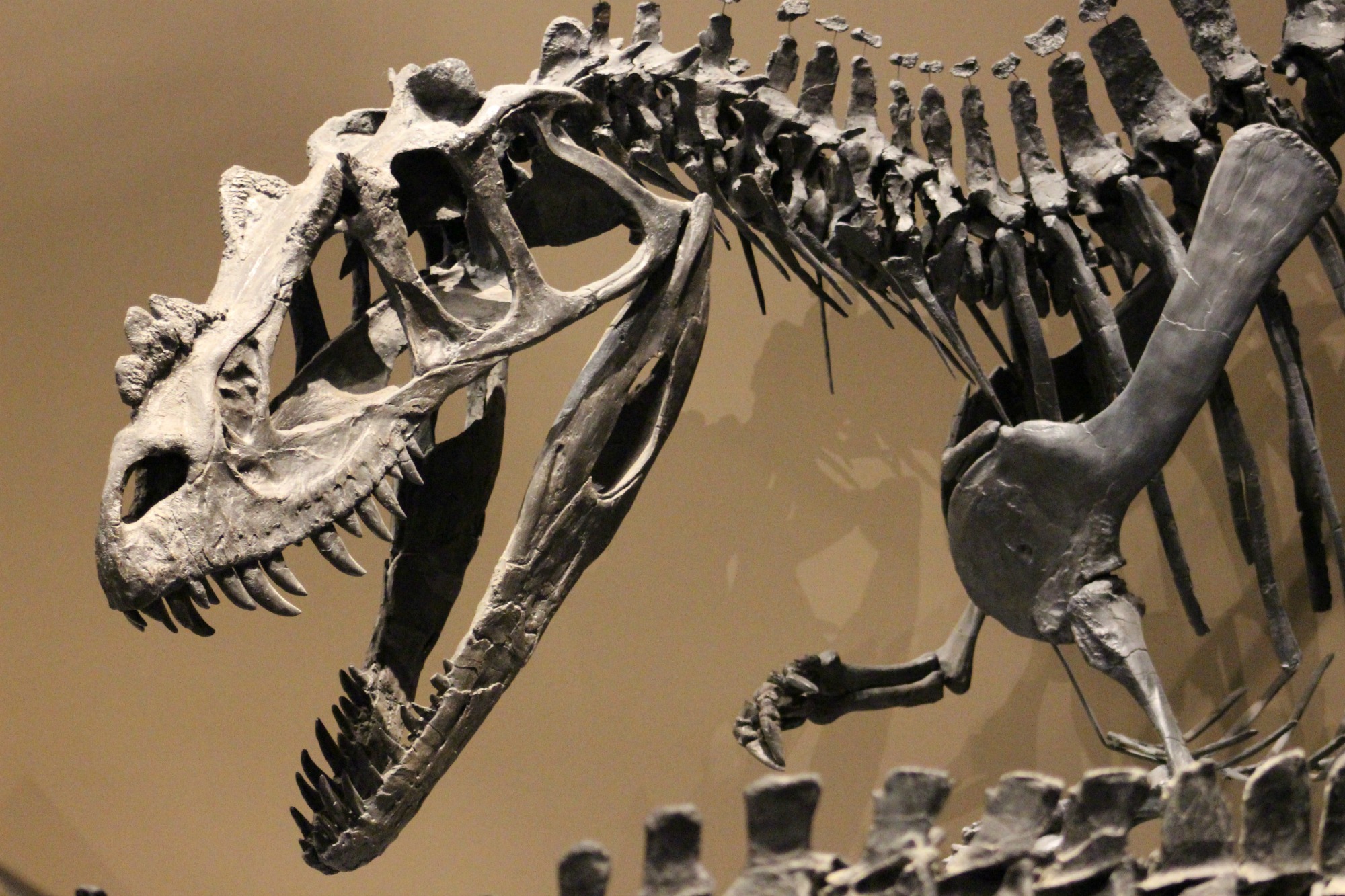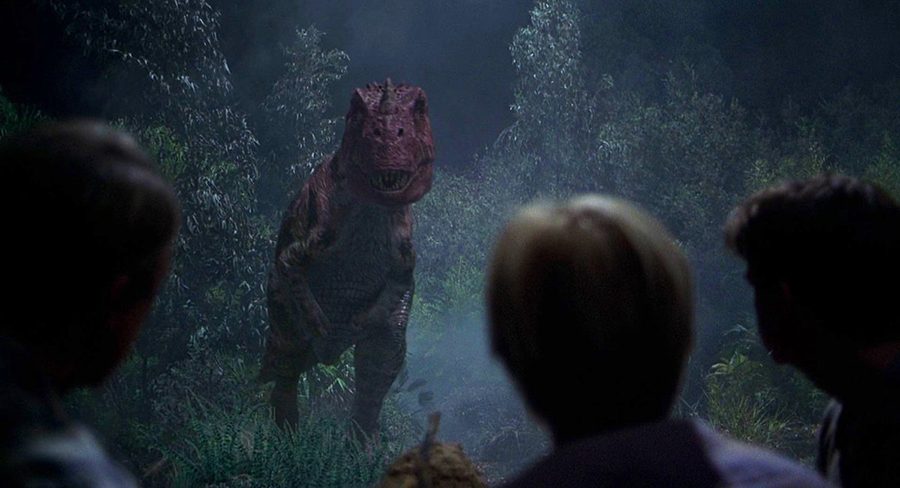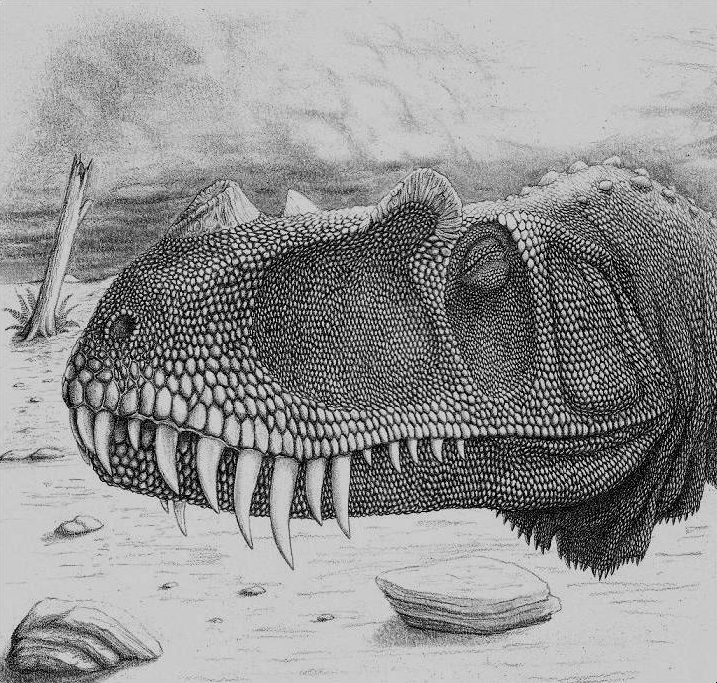10 Facts About Ceratosaurus

Ceratosaurus popped up in Jurassic Park III at one point – but what do we know about the dinosaur?
Like a ’56 T-Bird parked in a car park full of hybrids, Ceratosaurus shared its range with several less-archaic carnivores. This primitive predator really stands out in films and in museums, which helps explain the odd dino’s enduring popularity.
1. Ceratosaurus Had an Armored Backside.
A row of bony plates called osteoderms ran down the animal’s spine. They probably didn’t offer much defense, but they sure helped Ceratosaurus score some major style points!
2. It Might Have had Semi-Aquatic Habits.
Like modern gators, Ceratosaurus came with a strong, broad, and flexible tail—and the animal’s teeth are sometimes found scattered near lungfish skeletons. So was it amphibious? According to paleontologist Robert Bakker, the idea has merit. He’s even envisioned Ceratosaurus as a wannabe crocodile of sorts, stealthily lurking beneath Jurassic rivers. But while this dinosaur was likely a halfway-decent swimmer, many feel that Bakker’s very speculative hypothesis can’t keep its head above the water.
3. It’s Been a Movie Star for Over 100 Years.
Audiences watched the bonafide celebrity stalk cavemen in Brute Force (1914), take on Triceratops in One Million Years B.C.(1966), and gag at the sight of Spinosaurus poop in Jurassic Park III (2001).
4. Some Argue that This Creature Directly Competed with the Better-Known Allosaurus.
Both carnivores stalked Utah and Colorado 150 million years ago, and both had nasty jaws designed for slicing (as opposed to crushing bone and all that fun stuff). Because similar bites often mean similar diets, maybe these two titans hunted the same game. Or they might have found separate niches and steered clear of each other—Allosaurus did have proportionately-smaller teeth, after all. Regardless, the late Jurassic was clearly a tough time to be an herbivore.
5. Scientists Still Aren’t Sure About What Ceratosaurus Did With its Dynamic Nasal Horn.
In 1920, an American geologist named Charles Whitney Gilmore wrote that Ceratosaurus’ horn “formed a useful weapon for offense and defense.” Nowadays, however, this thing’s function no longer seems quite so clear-cut. Thin and probably on the fragile side, most 21st-century specialists hold that Ceratosaurus’ best-known feature was better-suited for display than combat.
6. It Featured Unusually Long Teeth.
One specimen manages to look just as scary with its mouth shut. This dino’s upper teeth are so long that—when the creature’s maw assumes a “closed” position—they extend below the lower jaw!
7. Ceratosaurus was Relatively Rare
Allosaurus seems to have been far more common than Ceratosaurus. The latter, bumpy-snouted predator is only known from a relative handful of skeletons. Meanwhile, very few dinos are as well-represented by the fossil record as Allosaurus: A single quarry contains assorted bones belonging to at least 44 individuals. How many Ceratosaurus specimens has this same site yielded? One.
8. Its Remains Have Been Found on Three Different Continents.
Though frequently cited as a North American creature, Ceratosaurus material has also turned up in Portugal and Tanzania.
9. Size-Wise, Not all Ceratosaurus Were Created Equal.
Ceratosaurus dentisculatus could have really done some damage. While the 18-foot Ceratosaurus nasicornis is, by far, this genus’ most famous species, C. dentisculatus was noticeably longer, with an estimated length of over 23 feet (7 metres)—and it may been twice as massive.
10. Ceratosaurus was Named by One of America’s Greatest Paleontologists.
Othniel Charles Marsh (1832-1899) also introduced the world to such prehistoric icons as Stegosaurus, Triceratops, Allosaurus, Diplodocus, and Apatosaurus. Plus, he lobbied for Native American rights, regularly corresponded with Charles Darwin, and was among the first to suggest that present-day birds evolved from dinosaurs.
Source: www.mentalfloss.com











